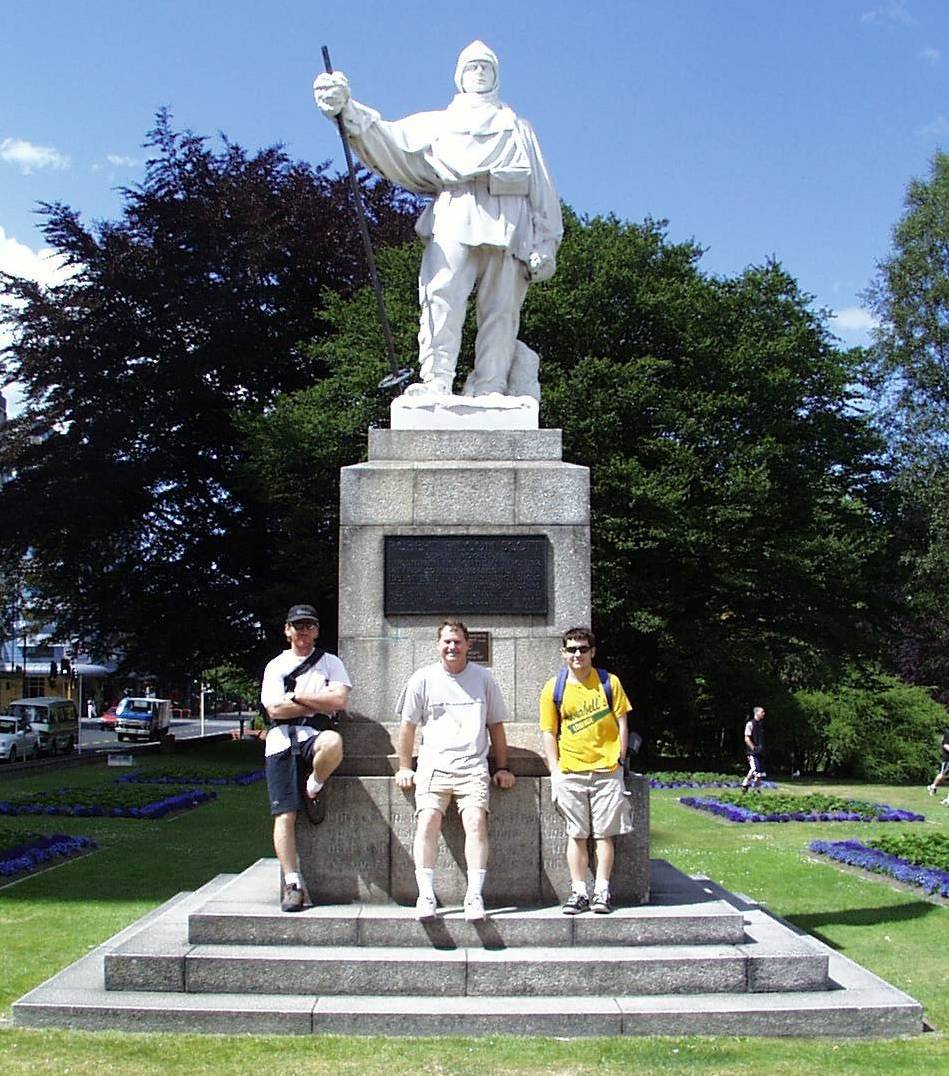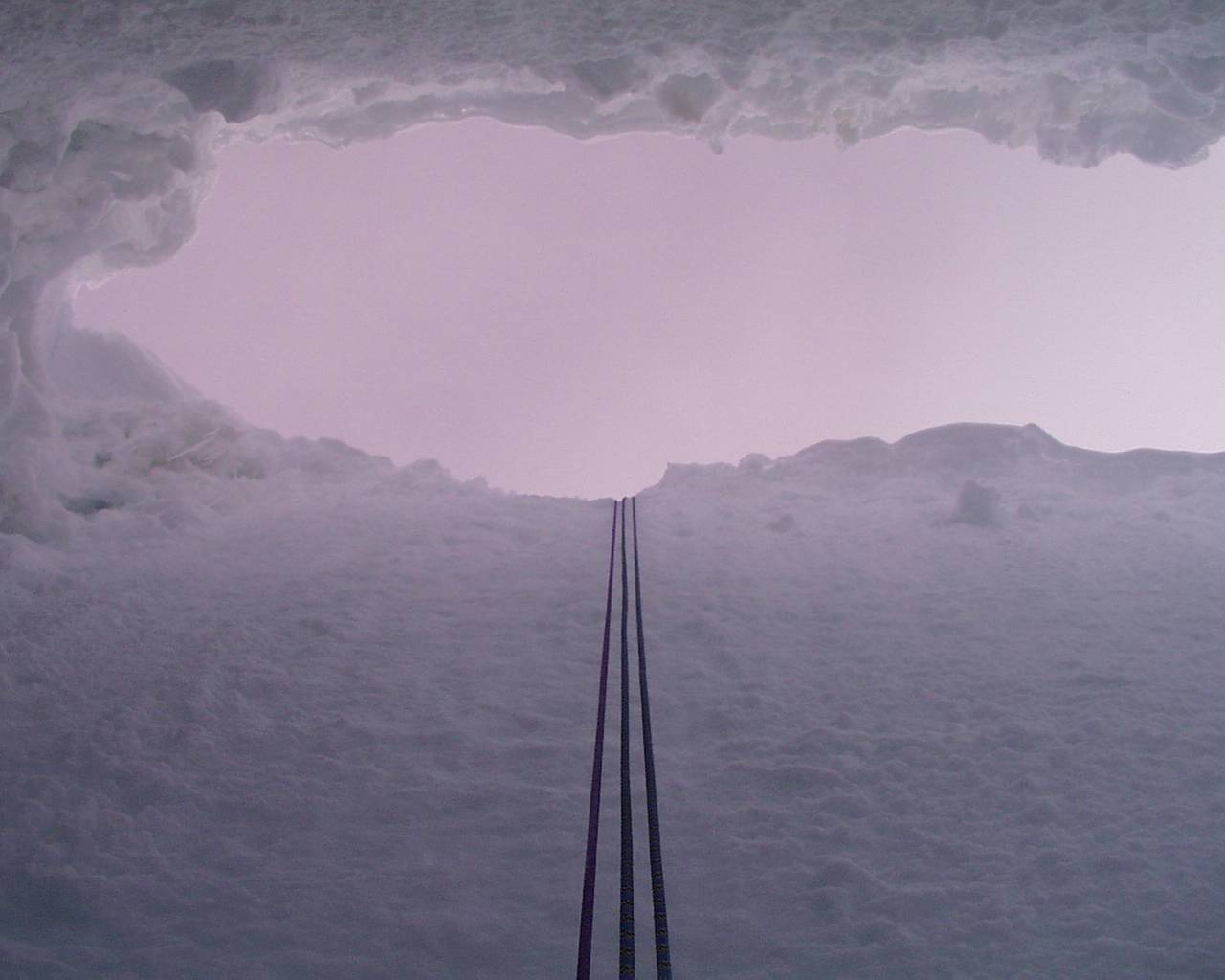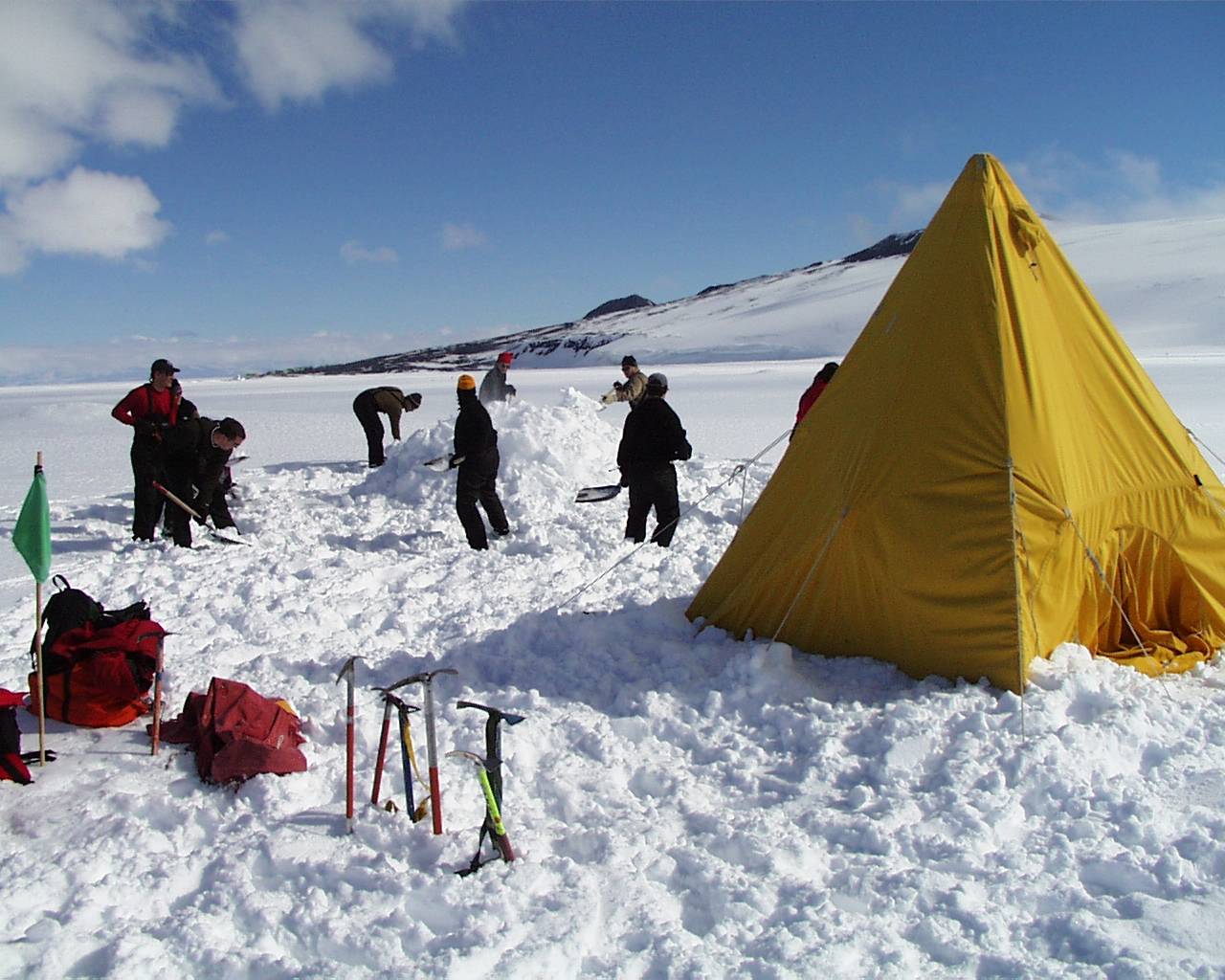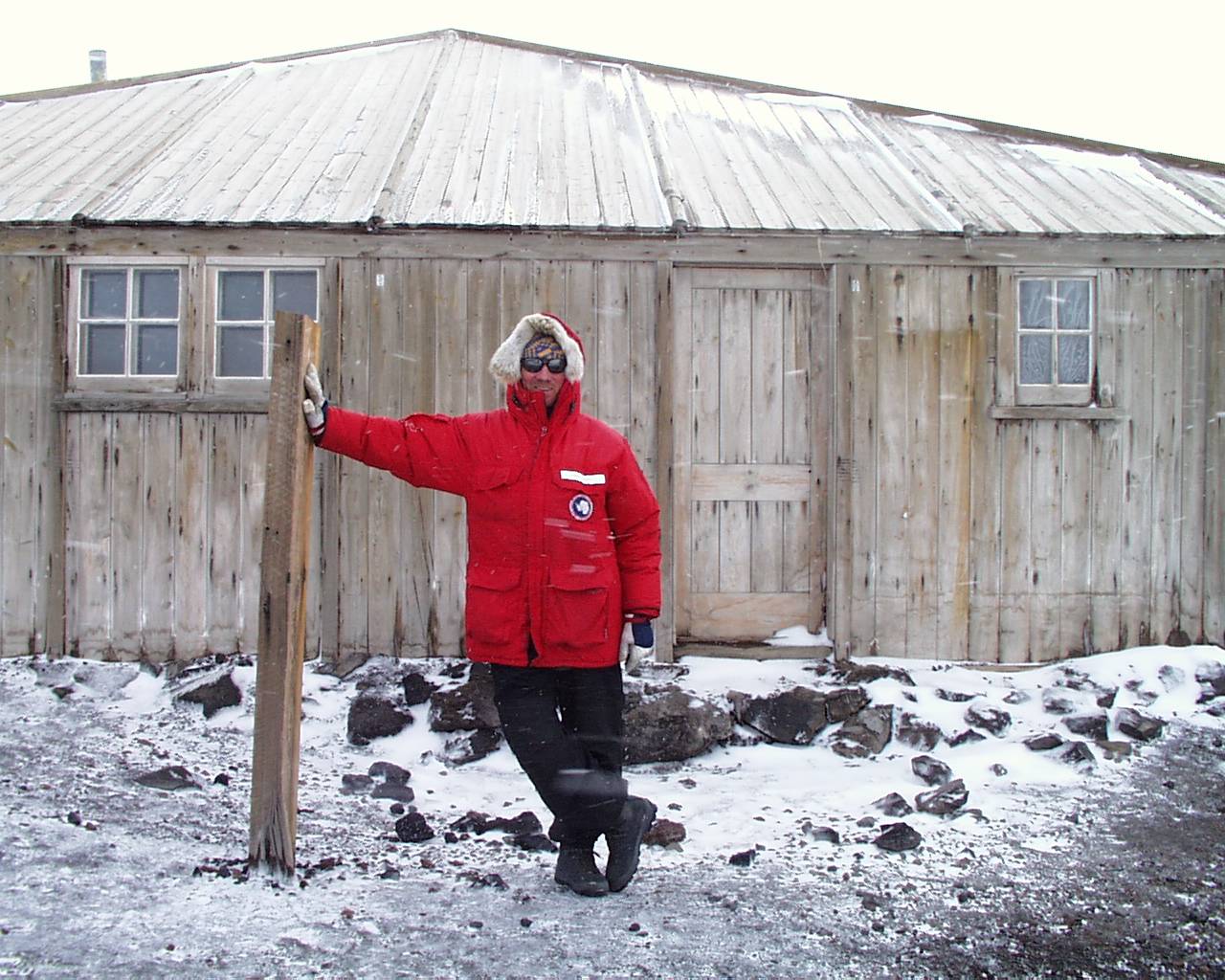Arrival in McMurdo
The first part of any Antarctic research entails reaching the continent and taking care of myriad arrangements necessary to get out into the field. After a long but uneventful flight from Los Angeles to Auckland, New Zealand, we went through customs and agricultural inspection to first enter the country. The Kiwis take this very seriously, as the island nation’s natural flora and fauna has taken hard hits from invasive exotic biota. Any tent, ground cloth, or hiking boots that have been used elsewhere must be taken through an inspection process to look for possible pests. A short commuter flight from the domestic terminal lands one in Christchurch.
In mid-December everything on the South Island is in full bloom, and the fragrances of flowers are quite a shock to winterized senses. We had a day and a half in town before our scheduled departure to Antarctica, so we strolled the downtown around Cathedral Square and checked out the local history and scenery, such as this statue in memorial to Antarctic explorer Scott. The Christchurch Museum has excellent displays on the natural and human history of the islands, and the botanical gardens are spectacular.
The day before our scheduled departure we visited the Antarctic Program Headquarters for the first time to be fitted in ECW (extra cold weather) clothing, and to receive instructions on packing and what to wear for departure. The clothing supplied to all Antarctic visitors is extensive and quite good quality, with lots of synthetics, sturdy shells, and a massive down-filled polar jacket of the type seen in all photos sent home from the continent. Fitting such warm clothing in the hot, muggy climate of New Zealand summer feels almost ridiculous, but the excellent photos on the walls of the headquarters reminds one of what a few thousand miles of travel to the south will bring.
After our introductory meeting and ECW fitting, we checked out the Antarctic Centre, an interpretive facility designed to educate the general public on the Antarctic continent and the types of scientific research being conducted there. The museum is impressive, with much detail and explanation of many aspects of Antarctica, but I can never help being disappointed by Disney-styled interpretive displays. The biggest hit is the environmental chamber, where one can see what the temperatures and wind-chill on the continent actually feel like, as well as sliding down a snow-covered hill and entering a Scott polar tent like we will be using in the field. One can also take a ride in a tracked vehicle around the compound, another highly popular activity.
Upon returning to our bed and breakfast, we met up with another researcher who was scheduled to fly out that morning. His flight had been cancelled due to mechanical problems, and he was rescheduled for our flight. He was heading for the South Pole station to monitor equipment and physics experiments as a part of his dissertation project, and would be wintering over for his first visit to the continent. I did not envy that assignment. During the night an intense thunderstorm developed with heavy rain. We were scheduled to depart at 4:45, so I began to worry about another cancellation. Due to the holidays, there would be no more flights until the 27th, so we really wanted to fly that morning.
We arrived at the airport early in the morning, donned our ECW, and commenced to a lot of hurrying up and waiting. We saw more introductory videos explaining how it is cold and windy down there, and what health and safety issues we might encounter, then finally we were bussed over to the plane. This time of year, after the sea ice has become too thin to support the large jet aircraft that had been flying support, the standard transport plane to the continent is the C-130. This four-engined turboprop plane is primarily for transporting gear, and human cargo is secondary, so facilities are cramped and uncomfortable. Passengers sit in suspended slings, around all the cargo, and try to find something to occupy their minds for the eight hour duration of the flight. The portholes are tiny, but I got a great view of Mt. Cook, New Zealand’s highest, and a bit more of the South Island before we went out over the ocean. The cloud cover was almost continuous for most of the flight, so there wasn’t much to do but read. As we neared the continent, however, the cockpit crew cleared a space to let two of us at a time join them for a look around. As I got to cockpit, the clouds began to break up and sea ice was visible below. I think that’s when it began to sink in that I was really going to Antarctica. Soon the Victoria Land coast came into view, and I was in heaven photographing the other-worldly ice, snow, and rock below. We flew past the Dry Valleys, and the Trans-Antarctic Range is outstanding. On any other continent it would be laced with climbing routes- here I’m sure none have ever been touched. Finally, we were told to buckle in for the landing. The big bird touched down gently on skis on the snow runway, and taxied to the shuttles. In minutes, we were on our way to McMurdo, driving below the spectacular flanks of Mt. Erebus under a blue sky.
McMurdo Station is a massive facility that has evolved over decades to support scientists and personnel that visit Antarctica for research or research support. Think of a cross between Leadville and Telluride, Colorado, gone bad. It looks exactly like a mining town, lacking the charm of early 1900’s architecture. Right now is peak season down here, and probably 1800 people are in town staging to enter the field or are working here. The last few days have been a blur of logistics and meetings coordinating the dozens of separate entities that must be dealt with to ready our field equipment. Safety lectures and introductions are de rigeur, and meetings must be scheduled with all the necessary departments: computer folks to set up accounts and equipment, food services to assemble field menus, equipment folks to ready the field gear, helicopter folks to set schedules and cargo requirements, communications folks to learn the radio protocol and check out radios- the list is long. Tuesday and Wednesday we attended a 2-day shake-down to test our equipment and skills, optimistically termed “Happy Camper School”. We rode in a tracked vehicle called a Nodwell out onto the Ross Ice Shelf with our instructor Ty and all the ECW and field equipment we will use in our remote camps. The point of Happy Camper School is to create as many kinds of shelter as possible, and then spend the night on the ice. The Snowmound City where the course is held is a ghost-town of igloos, quincees, snow trenches, and tent platforms. The Scott tent that Steve and I slept in was comfortable and warm- so much so that I didn’t even need to zip my sleeping bag. Remember that the sun shines 24 hours a day, so that around midnight when I was roused by my bladder, I ended up spending an hour outside photographing in the unique late-night sun angles. The next day, we did a short session on crevasse safety and roped snow travel, and we all got the chance to be lowered into and lifted from a crevasse. I hope to only get this view of a crevasse when under such control.
Finally on Friday we are scheduled to fly into the field. In the meantime, we’ve had another bout of cold weather after our sunny arrival, but we have been able to check out some more of the most local landmarks, such as the historic Scott Hut on Hut Point. Our first field stop will be on Marble Point, near a refueling depot where the first ice-breaker of the year is scheduled to dock to offload diesel fuel while we are there. The Italians found some of their oldest dates from this site, and it’s not a long flight from McMurdo, so Steve felt it would be a good starting point for the project. We should camp there for 3 to 4 days, and then return to McMurdo for processing of matrix and resupply, so I will write another update then.
Click on the images below for a larger version.
 |
 |
 |
 |
 |
 |